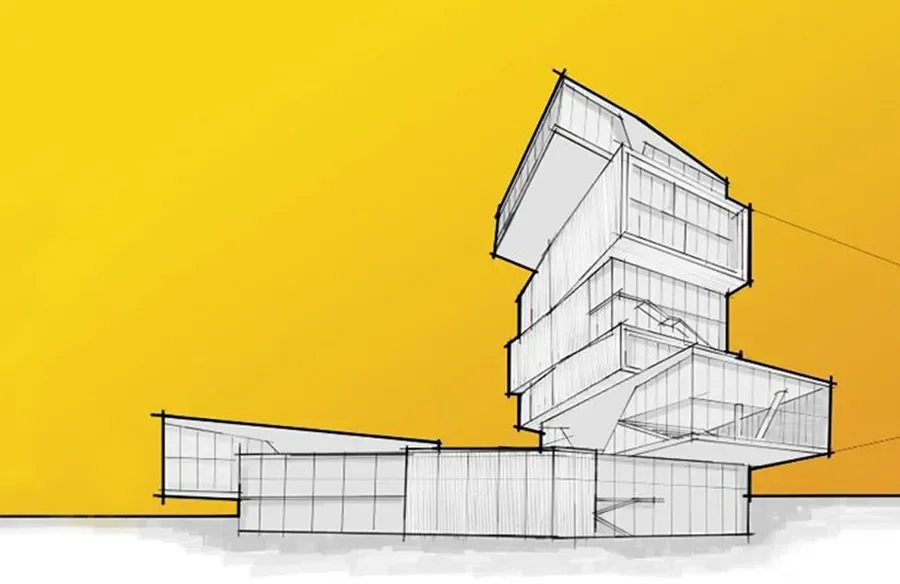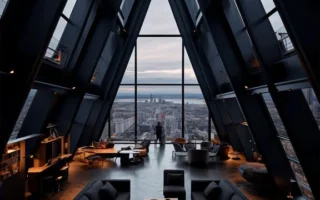Introduction:
In the realm of architecture, massing serves as a foundational principle, guiding the design and composition of buildings and urban spaces. It’s a term that encapsulates the arrangement, proportion, and scale of architectural elements within a three-dimensional volume. But what exactly is massing in architecture, and why is it so crucial to the design process? Let’s delve into this fundamental concept to unravel its significance and explore its applications.
1.Understanding the Basics:
Demystifying Massing: Defining the Concept
Massing, in its simplest form, refers to the overall volume and form of a building or structure. It encompasses the arrangement of solid and void, the interplay of light and shadow, and the relationship between various architectural elements. Massing is not merely about size or scale; it’s about the visual and spatial impact of a building within its context. By manipulating massing, architects can create buildings that are dynamic, expressive, and responsive to their surroundings.
2.The Language of Form: Elements of Massing
At its core, massing is composed of a series of architectural elements, each contributing to the overall composition and character of a building. These elements include walls, roofs, floors, and openings, as well as projections, setbacks, and articulations that add depth and complexity to the form. Massing is also influenced by factors such as symmetry, rhythm, and hierarchy, which help establish a sense of order and cohesion within the design. By carefully orchestrating these elements, architects can sculpt spaces that are both functional and visually compelling.
3.From Concept to Creation: The Process of Massing
The process of massing begins with a conceptual exploration of the site and programmatic requirements. Architects analyze the context, climate, and topography to inform their design decisions, identifying opportunities and constraints that will shape the massing strategy. Through sketching, modeling, and digital simulations, architects experiment with different massing options, exploring variations in form, scale, and orientation. This iterative process allows architects to refine their designs, balancing aesthetic aspirations with practical considerations to achieve an optimal solution.
4.Context is Key: Massing in Urban Design
In urban contexts, massing takes on added significance, as buildings must respond to the scale, density, and character of their surroundings. Urban massing is guided by principles of contextuality, continuity, and connectivity, ensuring that buildings contribute to the fabric of the city while also addressing the needs of their users. Architects consider factors such as street frontage, building heights, and setbacks to create a cohesive urban ensemble that enhances the public realm and fosters a sense of place.
5.Light and Shadow: The Role of Massing in Daylighting
Lighting is a critical aspect of architectural design, influencing the mood, comfort, and energy efficiency of a space. Massing plays a crucial role in daylighting, determining how natural light enters and interacts with a building’s interior. By strategically shaping the form and orientation of a building, architects can optimize daylight penetration, minimize glare and shadows, and create spaces that are bright, airy, and inviting. Massing also affects solar heat gain and thermal comfort, with well-designed buildings harnessing the sun’s energy to reduce heating and cooling loads.
6.Symbolism and Significance: Massing in Monumental Architecture
In monumental architecture, massing is imbued with symbolic and cultural meaning, evoking a sense of grandeur, power, and identity. From ancient temples and palaces to modern skyscrapers and civic buildings, monumental massing reflects the aspirations and values of society. Architects use scale, proportion, and materiality to create buildings that command attention and inspire awe, serving as iconic landmarks that define the skyline and shape the collective memory of a place.
7.Sustainability by Design: Massing Strategies for Energy Efficiency
In an era of climate change and environmental stewardship, architects are increasingly focusing on sustainable design strategies to reduce the environmental impact of buildings. Massing plays a crucial role in energy efficiency, with thoughtful design choices minimizing heat loss, maximizing natural ventilation, and optimizing passive solar gain. Strategies such as compact building forms, orientation towards prevailing winds, and green roofs help reduce energy consumption and mitigate the urban heat island effect, creating healthier and more resilient built environments.
Conclusion:
Crafting Meaningful Spaces: The Art of Massing in Architecture As we navigate the complexities of the built environment, the art of massing remains a cornerstone of architectural practice. It’s not just about shaping physical forms; it’s about creating meaningful spaces that enhance the human experience and enrich the fabric of our cities and communities. By mastering the language of massing, architects can transform abstract concepts into tangible realities, shaping environments that inspire, delight, and endure for generations to come.




